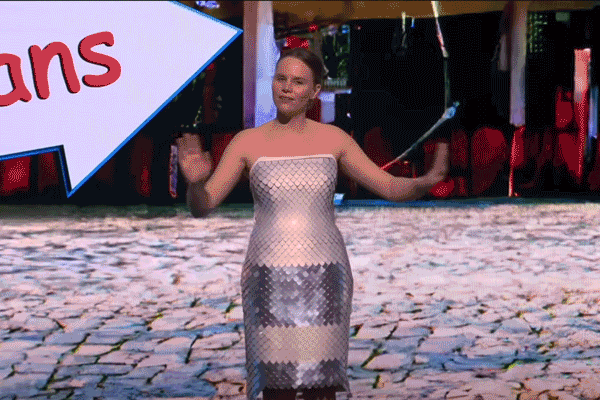At the Adobe Max conference, Dr. Christine Dierk, a research scientist at Adobe, unveiled an intriguing new project called Project Primrose. This project features a dress adorned with liquid crystal panels that can react to movement, resulting in a changing design of the dress. If you want to see the dress in action, you can watch the video here. Adobe has also published a detailed paper providing technical insights into the process.
 Although the paper is from the 2022 User Interface & Software (UIST) conference and primarily discusses a canvas and handbag, it still provides valuable insights into the technology behind the dress. The dress utilizes the same technology, with liquid crystal panels draped over a scientist instead of a frame. If you are unable to access the UIST version of the paper, Dr. Dierk has made a free version available here.
Although the paper is from the 2022 User Interface & Software (UIST) conference and primarily discusses a canvas and handbag, it still provides valuable insights into the technology behind the dress. The dress utilizes the same technology, with liquid crystal panels draped over a scientist instead of a frame. If you are unable to access the UIST version of the paper, Dr. Dierk has made a free version available here.
The dress incorporates Polymer-dispersed Liquid Crystal (PDLC) panels provided by the Shanghai HO HO Industry Co, which are commonly used in windows and doors for privacy purposes. The panels consist of an opaque Iridium Tin oxide-coated PET film that becomes transparent when a voltage difference is applied.
These panels are hexagonally shaped and connected with flexible PCBs in a daisy chain configuration. Interestingly, Dr. Dierk discovered that smaller panels require less voltage to activate. For their canvas example, they safely reduced the voltage levels to -15V to +15V to trigger the two states, which is more suitable for a wearable device like the dress.
When triggered, the panels are not completely transparent. The paper describes them as having a “soft ivory” appearance when overlaying a reflective material. Additionally, Pulse Coded Modulation (PCM) can be employed to achieve greyscales and vary the transparency of the panels. By driving the panels at 3.2KHz, they were able to create 64 shades of grey.
The dress’s main controller consists of a custom PCB housing a Teensy 4.1 microcontroller and a BlueFruit LE SPI module. Two 14.8V LiPo batteries provide power to the system, with converters supplying power to the chips and switch modules. This setup allows the Teensy to directly control the -15V and +15V levels for the panels using each battery.
The array of panels is constructed using modules, where each module contains four panels connected to a controller PCB. The controller PCB incorporates Analog Signal Device (ASD) ADG1414 chips, which receive signals from the bus and switch the panels individually.
Interestingly, Dr. Dierk utilizes the bus that connects the modules to deliver both power and the bus signal that controls the panels. The -15V and +15V levels are modulated with a 50Hz square wave to create the bus signal while simultaneously powering the panels. This clever approach simplifies the complexity of the modules.
The Teensy 4.1 serves as the centralized control for the entire system and can utilize its inertial measurement unit (IMU) to detect movement and adjust the pattern accordingly. Although the dress video does not showcase the electronics of the system, the paper claims that the canvas example only consumed 0.58 Watts, suggesting that the dress likely requires just a few watts of power.
This dress is an incredibly captivating creation, and it holds significant potential. How would you leverage this technology?

